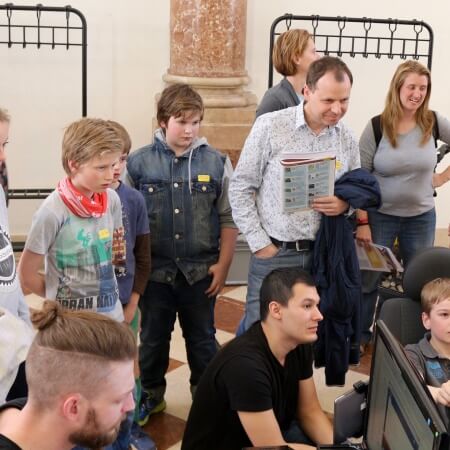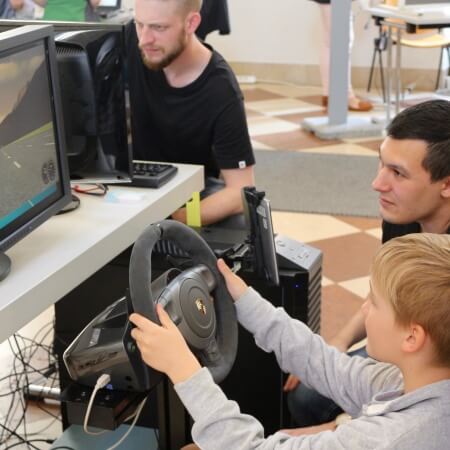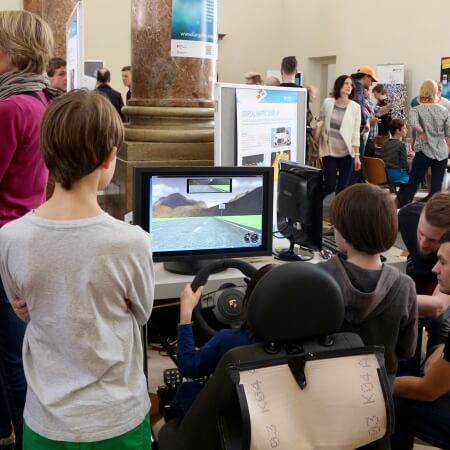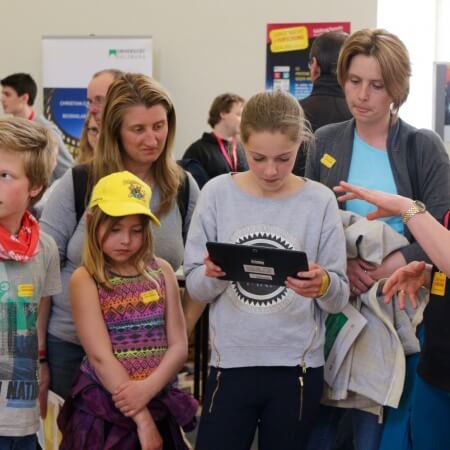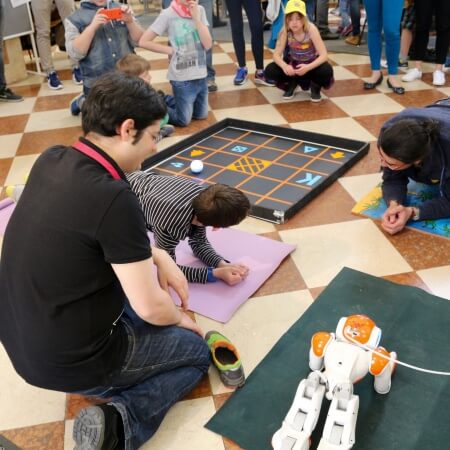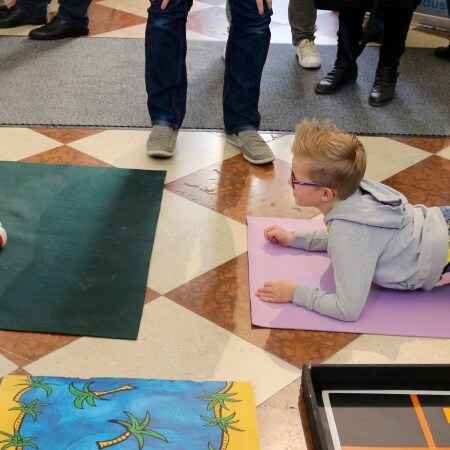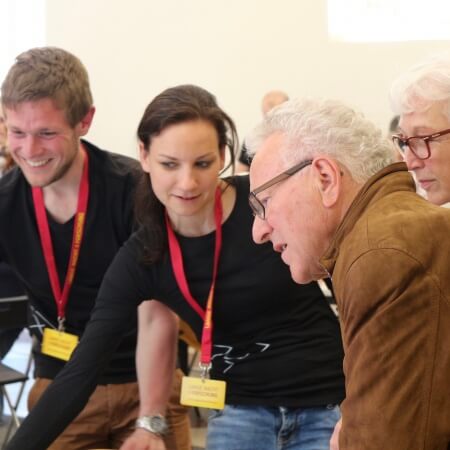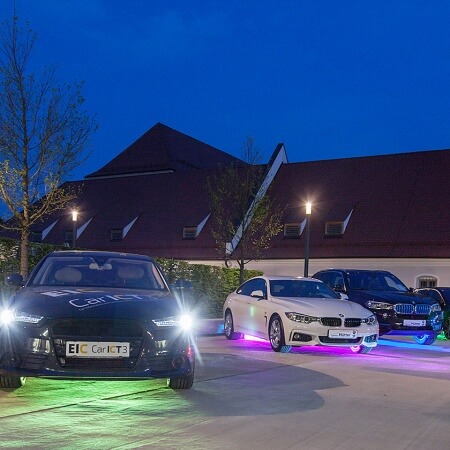On the 22nd of April 2016, the Lange Nacht der Forschung (long night of research) took place in Austria and the Center for HCI presented its research to visitors during the event.
What will Human-Machine Interaction of the Future look like?
Our main topic for this years Lange Nacht der Forschung was the future of HCI. At our station in the Sala Terrena, we showed ongoing research related to active ageing, human-robot interaction, production, and driving of the future, all representing and tackling highly relevant issues for todays societies, to be deeply explored for desirable futures.
Christiane Moser and Alina Krischkowsky presented GeTVivid, a peer-to-peer support exchange platform. Thereby, the visitors had the opportunity to try out the system on a TV, complemented with a second screen on a tablet. Katja Neureiter and Johannes Vollmer started a Design Challenge concerning the ProMe project, which is a platform aiming to facilitate professional intergenerational cooperation. They invited the visitors to sketch their ideas and suggestions to improve the layout of the search functionality. Many interesting insights could be identified that will now be used to inform further developments of the platform.
Manuel Giuliani, Susanne Meerwald-Stadler, Nicole Mirnig, and Gerald Stollnberger presented visitors with some latest trends in Human-Robot Interaction. The visitors had the chance to experience augmented reality for controlling a robot first-hand. The researchers invited visitors to join a plank competition with the NAO robot. Most of the competitors won against the robot and showed that humans still prevail.
Introducing visitors to future factory work, Daniela Wurhofer, Thomas Meneweger, and Florian Rätzer showed a fictional job description for highly competent factory workers, working together with robots in the year 2020. The researchers discussed this scenario with interested visitors, who were also free to evaluate the displayed job characteristics regarding its probability to exist in 2020 and if it appears positive or negative to them. In general, the scenario was judged in a more positive than negative way and a large majority of visitors thought that this was a quite realistic job description for the year 2020.
Furthermore, Thomas Grah, Artur Lupp, and Sandra Trösterer built up a driving simulator and presented a shape-changing seat, which allowed visitors to haptically sense approaching cars from behind while driving in a simulation. Particularly, young visitors tried out the driving simulation and experienced this new way of providing context information to the driver using the haptic sense. Nearly all visitors could differentiate from which direction the approaching rear car was coming from. In addition, the possibilities, advantages and drawbacks of the approach were discussed with the visitors.
How good is a Personal Audio System?
In addition to our station at the Sala Terrena in Salzburg, we were further present at the castle Ranshofen (Upper Austria) together with our CDL project partner AUDIO MOBIL Elektronik GmbH (AME). Nicole Perterer and Arno Laminger presented a novel in-vehicle auditory system developed by AME, which emits auditory signals directly from within the headrest. Visitors could experience the system and compare it to a regular on-board audio system on-site via phone calls from outside to inside the vehicle, or by simply enjoying some music from a new (auditory) perspective.

